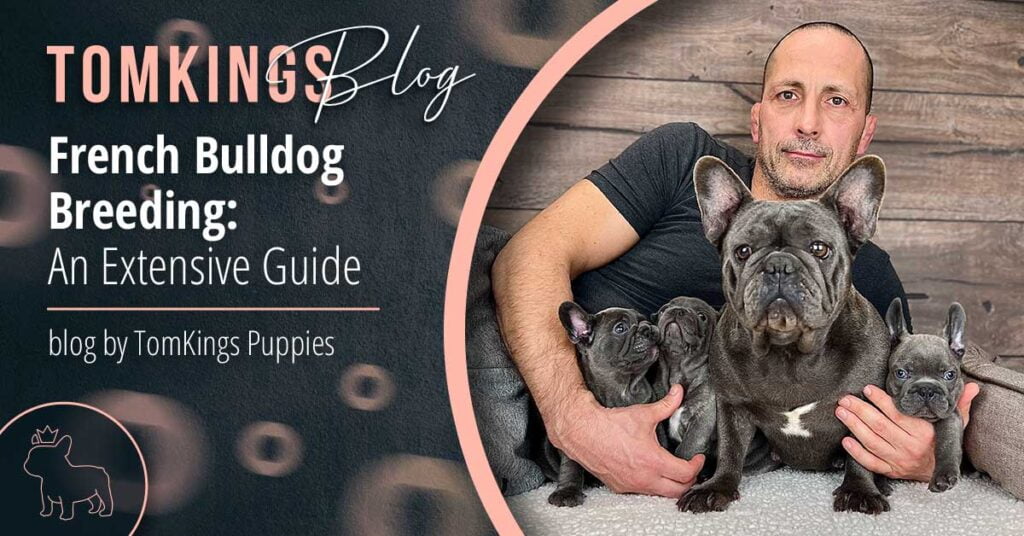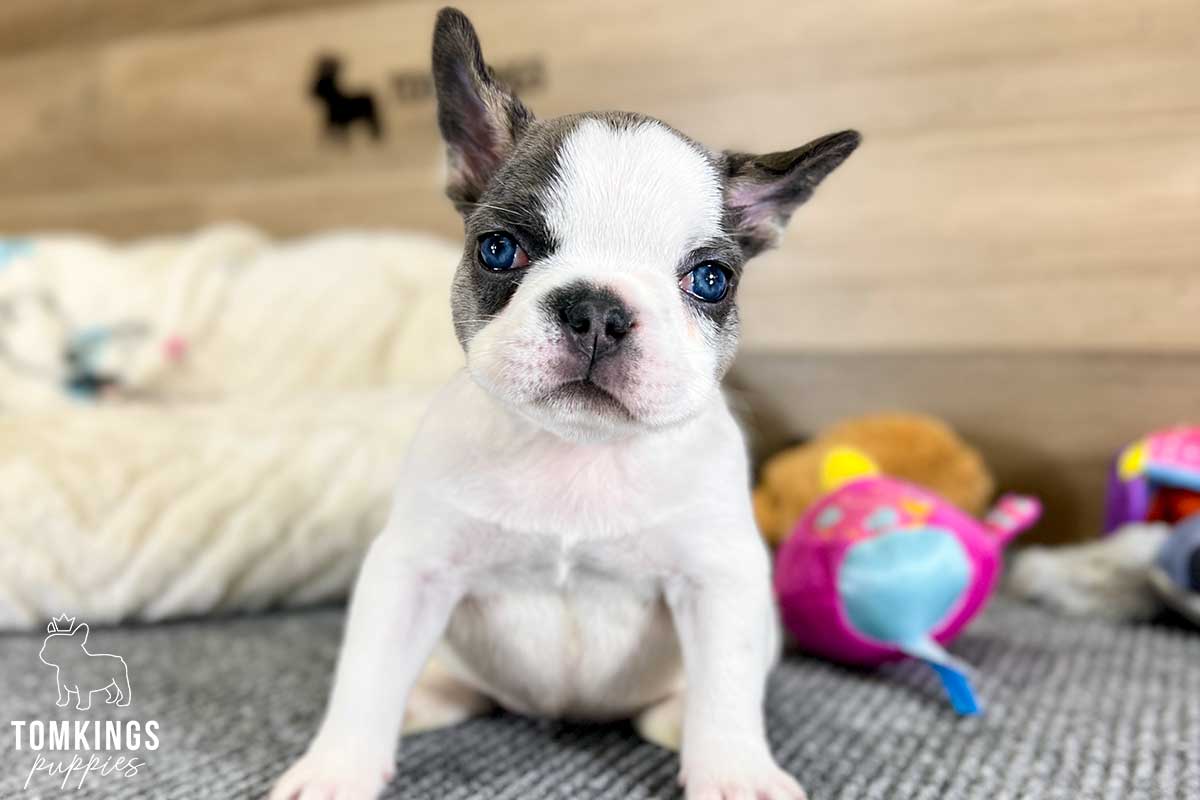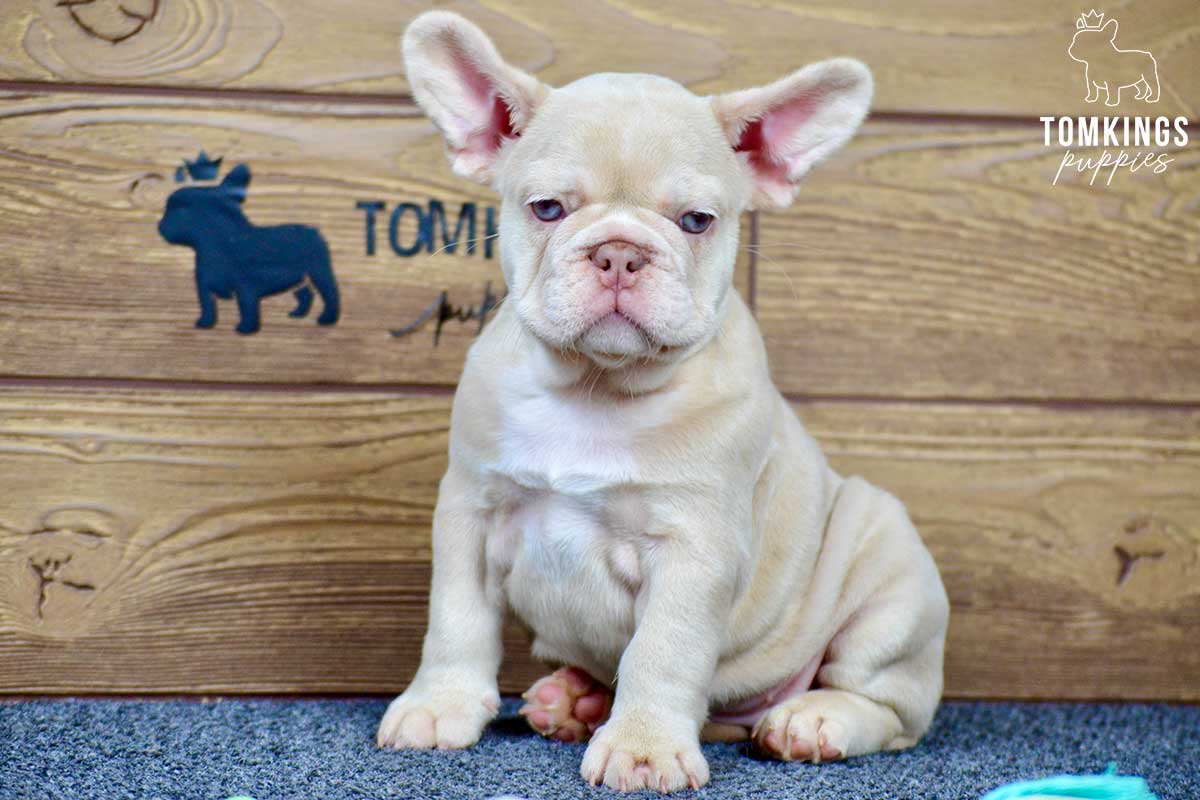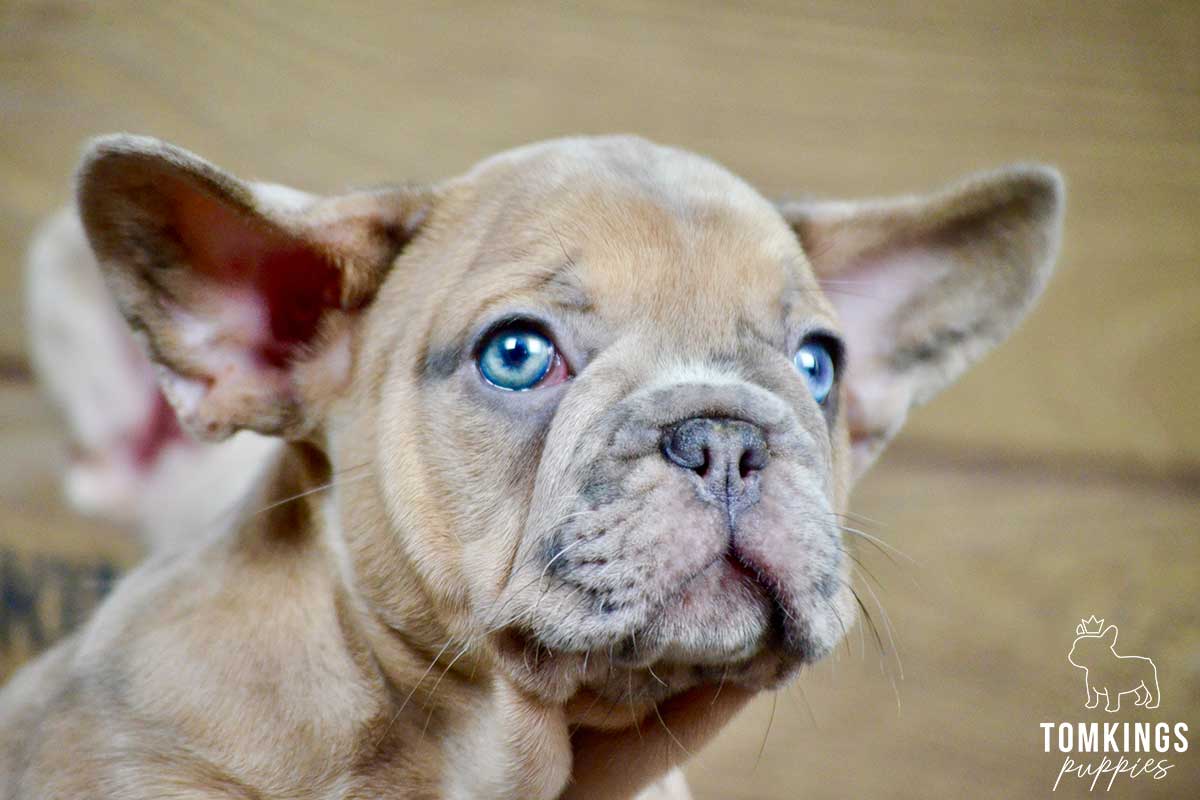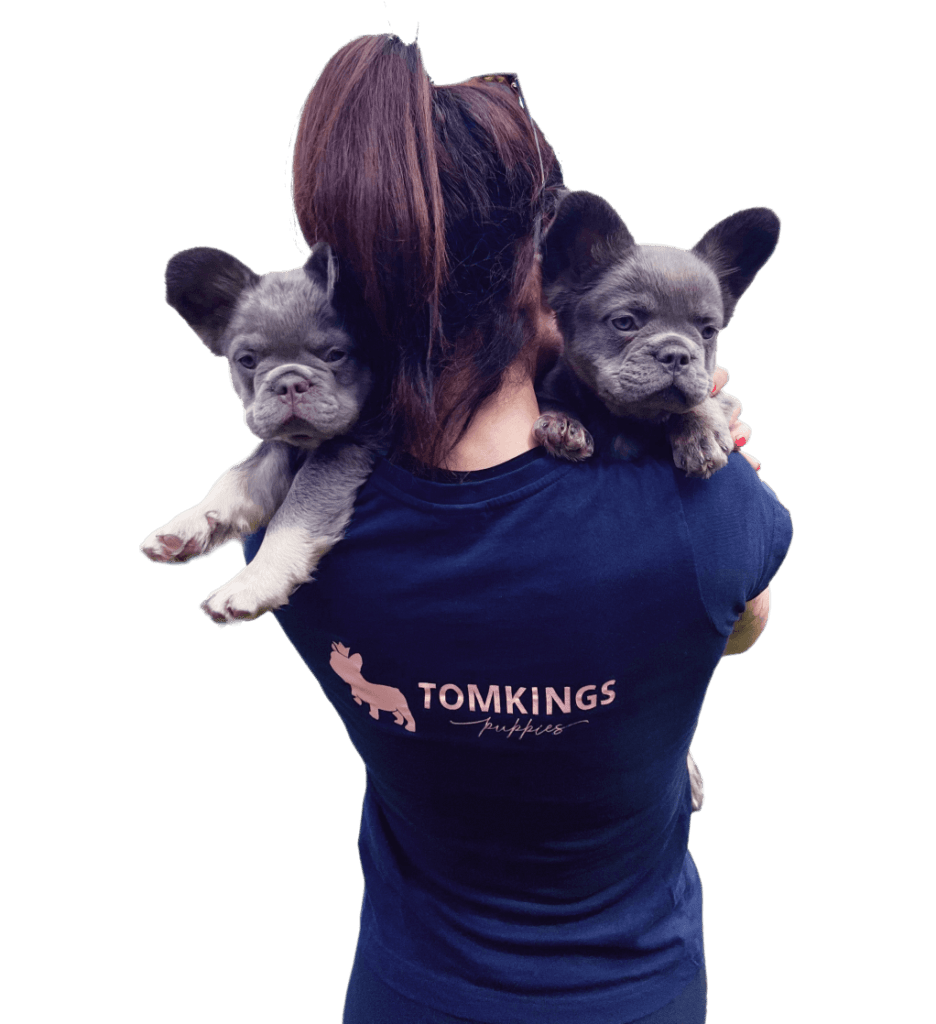If you’re seeking comprehensive and detailed information about French Bulldog breeding, you’re in the right place! In this guide, we have compiled more than a decade of experience and will cover topics such as care during pregnancy, the birthing process, puppy development, socialization, and more. Whether you’re a prospective breeder, owner, or simply a Frenchie enthusiast, this extensive guide is your go-to resource for all the information you need about French Bulldog breeding.
Table of Contents
ToggleThe Pillars of Ethical French Bulldog Breeding
Before we delve deep into the realm of French Bulldog breeding, let’s clarify what ethical breeding means. Ethical French Bulldog breeders prioritize the interest of the French Bulldog breed over their business interests, in other words, they maintain the high quality of the breed and raise healthy and happy French Bulldog puppies.


Someone who strives to do the same must follow strict guidelines of
- the selection process of the parent dogs
- the attention given to the Frenchie mom and her pups
- the feeding and healthcare protocols of the babies
- the space they need to play and grow healthy muscles.
It goes without saying that ethical breeding is the only way for someone considering French Bulldog breeding. Sadly, it has gained a negative reputation during recent years due to numerous scams and unethical breeding practices. As reputable breeders, part of our mission is to demonstrate that French Bulldog breeding can be conducted in a transparent, ethical and trustworthy way.
Frenchies and Natural Breeding
If you’re looking into breeding French Bulldogs, you probably already know that their unique physical characteristics make it difficult for them to mate naturally. Due to their short legs and narrow hips, male Frenchies cannot properly mount the females, which is why artificial insemination is the most effective way of breeding. Read our detailed guide to learn how French Bulldog stud service works.
Natural birth for French Bulldogs is not recommended either. The pups have large heads in relation to their bodies, which can pose significant risks while giving birth as they may get stuck in the birth canal. A planned C-section performed by an experienced vet is by far the safest approach to ensure a successful delivery and the health of both the mother and the puppies.
Because of these special practices, French Bulldogs are one of the most expensive dog breeds in the world. To learn more about their prices, check out our Ultimate French Bulldog Price list.
The Full French Bulldog Breeding Process
In the following sections, we break down the full French Bulldog breeding process into smaller parts, explaining all the aspects and must-follow steps that a prospective breeder needs to know. As you’ll see, breeding French Bulldogs is definitely not a hobby: it’s a full-time job!
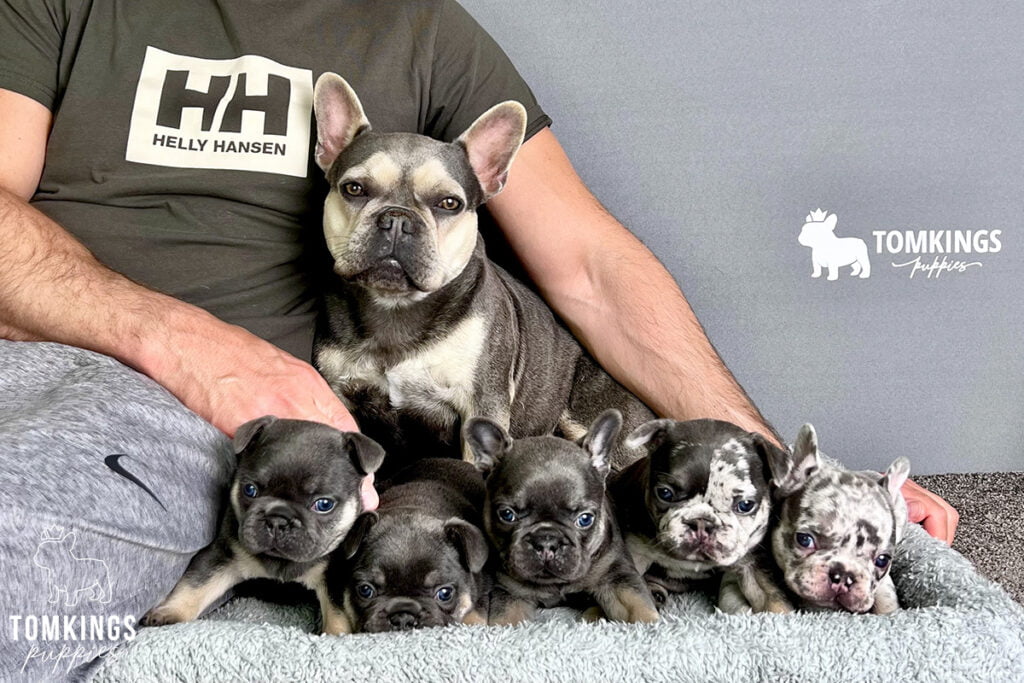

1. Things to Consider Before Breeding
Health screenings of the parent dogs
An ethical French Bulldog breeder must do everything they can to breed healthy and happy French Bulldog puppies. One crucial element of that process is making sure that their parent dogs are in perfect health, having an appropriate weight and being free from any hereditary genetic diseases.
To produce puppies with a robust immune system and excellent overall health, a veterinarian must screen the parent dogs before breeding. They will verify through blood and genetic tests that the dogs don’t carry any genetic mutations that could cause problems in their offspring. With a clean bill of health, one can finally proceed to breeding their French Bulldogs.
French Bulldog genetic diseases
Below you can find a list of the possible genetic diseases in French Bulldogs:
- Chondrodystrophy and Chondrodysplasia (CDPA/CDDY, IVDD)
- Progressive Retinal Atrophy (PRA-CORD1)
- Malignant Hyperthermia (MH)
- Degenerative Myelopathy (CDM)
- Hereditary Cataracts (HC)
- Multifocal Retinopathy 1 (CMR 1)
- Congenital Hypothyroidism (CHG)
- Hyperuricosuria (HUU)
- Dilated Cardiomyopathy (CDM)
It’s important to mention that the risk of developing any of these diseases is rather low. That’s why genetic screening in French Bulldogs is usually not mandatory (regulations may vary across different countries), but recommended to further minimize their occurrence. These genetic screening tests are performed by specialized genetic laboratories using blood samples.
The timing of the first pregnancy
The ideal time for the first breeding is when the female Frenchie has reached a sufficient level of development and maturity. In general, it is recommended to consider the first mating around the second heat cycle, which is typically around 14-15 months of age. However, this can vary depending on when the female dog has her first heat. On average, the first heat occurs around 8 months of age, with the second heat cycle following approximately 6 months later.
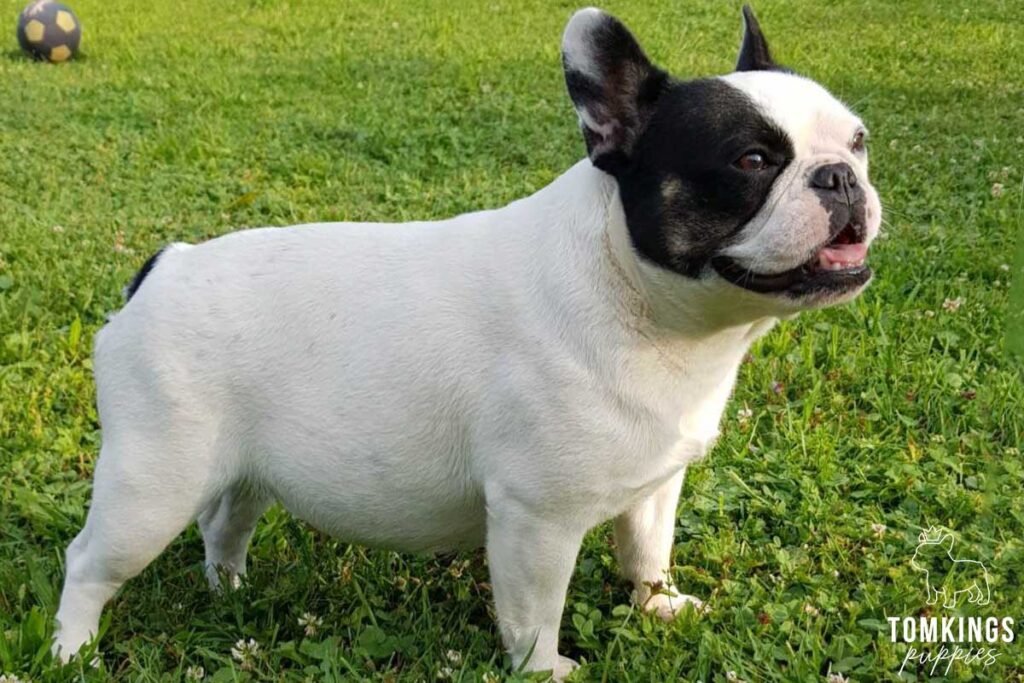

Preparing for an upcoming litter
Creating the right environment is essential for French Bulldog breeding, to ensure the well-being of both the mom and her babies. The designated space for the upcoming litter should be:
- separate, secluded and calm
- easily cleanable
- well-lit
- temperature-controlled (heating/cooling)
- comfortable
- secure
- well-ventilated
- adequately sized.
The area should be a minimum of 43, ideally around 43-65 square foot (4-6 square meters). Initially, a smaller area is sufficient, but as the puppies grow and learn to walk they will need more room, which naturally calls for a larger area.


Subscribe to our weekly blog newsletter
It’s also important to provide a comfortable and secure place for the pregnant Frenchie, particularly during the final weeks, where she can rest and spend her time.
24/7 supervision
You should be prepared that the birth of the puppies requires round-the-clock care. That means that someone needs to be at home at all times, monitoring and nurturing both the mother and the newborns. It’s important to note that this level of commitment cannot be maintained beside a regular job.
A pregnant dog, especially during the last 1-2 weeks before delivery, requires constant supervision. That allows the breeder to promptly notice any issues that may arise and seek immediate professional assistance. Continuous supervision can even ensure the survival of the puppies and preventing complications.
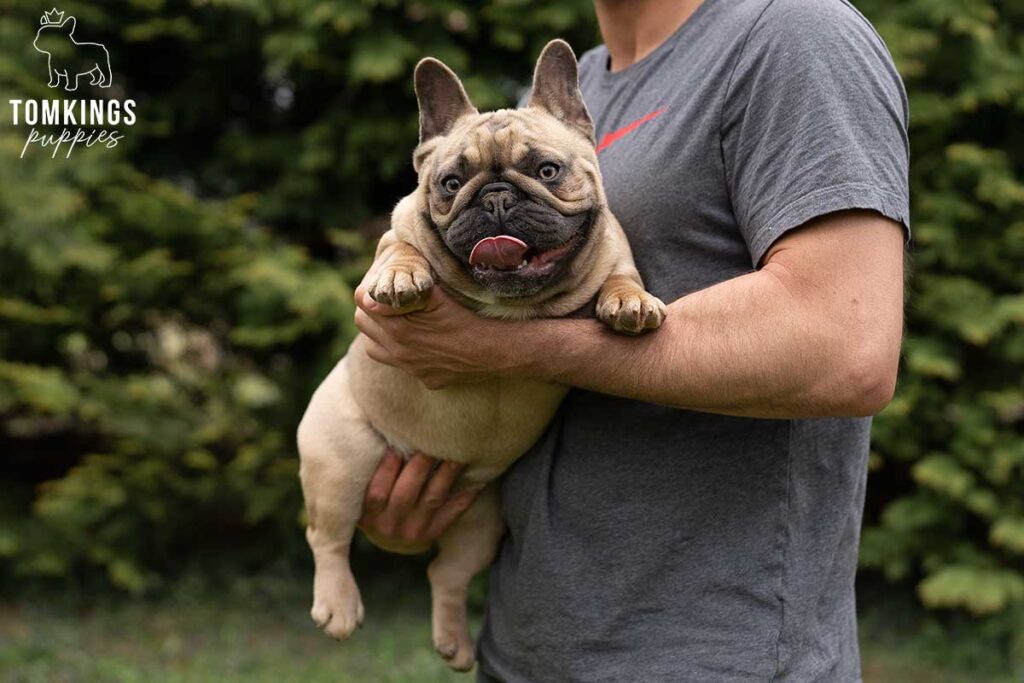

At the earliest, the puppies can be left alone for 1-2 hours when they reach 4 weeks of age. This level of round-the-clock attention is required for a minimum of 5-6 weeks. After that you should check on them every 2 hours until they reach 8-10 weeks of age or until they are placed with their new owners.
Responsibilities around the mother dog
The Frenchie mom should be up to date on all necessary treatments. That includes regular deworming and protection against both internal and external parasites, like heartworms and mites. A thorough veterinary examination is also necessary to ensure the mother’s overall health and readiness for pregnancy.
2. Things to Consider After Mating
Caring for a pregnant Frenchie mom
Just like any expectant mother, your beloved Frenchie mom requires special attention and care during pregnancy.
Regular exercise is still important, but it should be gentle and tailored to her needs. Long walks should be replaced with shorter, leisurely strolls, especially during hot weather. Engage in shorter walks and engage in interactive play sessions to keep her active and mentally stimulated. Shower her with extra love and attention during this special time.
It’s important to shield her from stressful situations and loud noises that could cause anxiety. Keep her away from unfamiliar dogs to minimize the risk of illness.
Remember, continuous monitoring is essential. Keep a close eye on her health and behavior throughout the pregnancy. If you notice any concerning signs or issues, don’t hesitate to reach out to your veterinarian for immediate assistance.
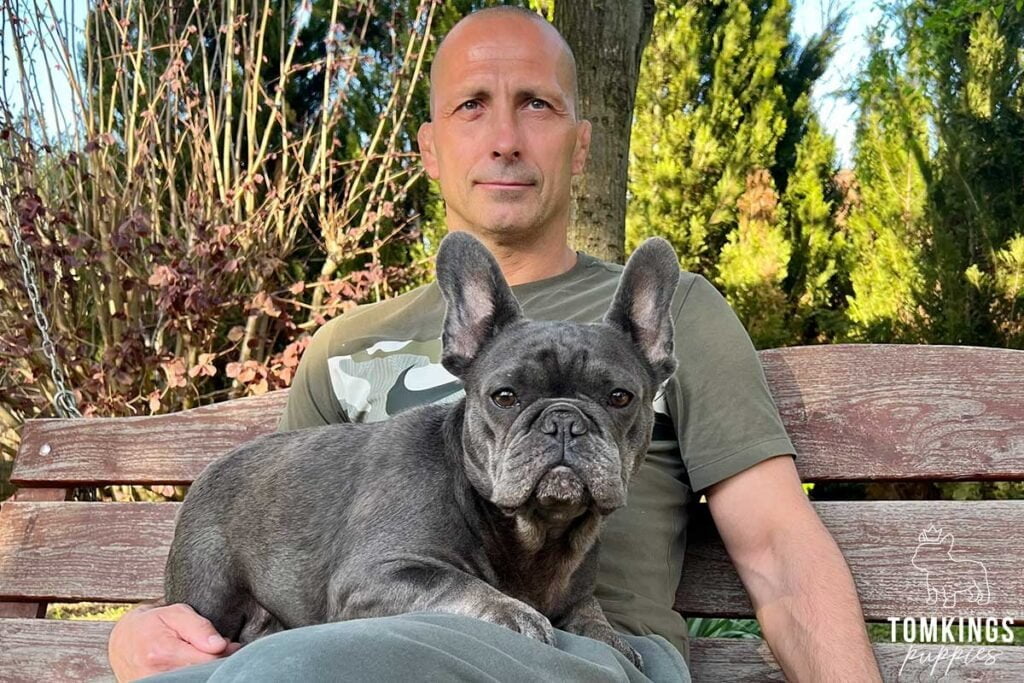

As the pregnancy progresses and she enters the final weeks, create a calm and tranquil environment for her. Provide a cool and quiet space where she can rest comfortably. Minimize stressors and ensure she feels secure and at ease.
Food and supplements
Until you know that the mating was successful for sure, there is no need to change the amount or type of food your female Frenchie gets. Once her abdomen starts to round slightly (after a few weeks), the food portion should be minimally increased, but you should avoid overfeeding.
A Frenchie mom requires more nutrients during pregnancy to deliver healthy puppies, so it is important to pay attention to her diet. Around the midpoint, approximately one month into the pregnancy, we recommend switching to the Royal Canin Mini Starter Mother & Babydog food, which provides all the necessary nutrients.
Feed your Frenchie mom twice a day and provide fresh cold water every morning. Avoid giving raw meat and raw eggs to your pregnant dog!
As for supplements, we recommend the following:
- Selenium (dosage recommended by the manufacturer, corresponding to the dog’s weight)
- Omega-3 fish oil (purchase in pump form and add to the food, dosage according to the manufacturer’s instructions)
It’s important to note that consulting a vet is highly recommended when it comes to supplements, as the dosage may vary depending on the mother dog’s health condition and nutritional needs.
Duration of the pregnancy
Generally, a dog’s pregnancy lasts between 58 and 63 days, although that may vary from dog to dog. That’s why it’s extremely important to keep a record of the pregnancy dates to know when the puppies can be expected, and prepare yourself for the possibility that they may arrive earlier.
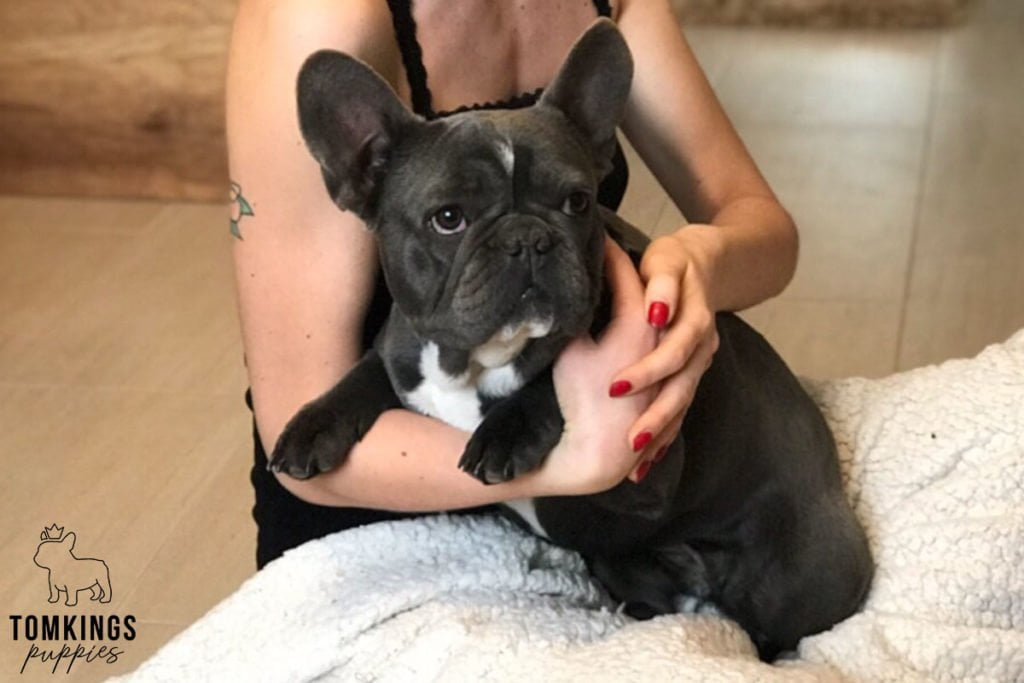

Ultrasound
It is recommended to have an ultrasound performed around the 28th to 30th day of pregnancy. By this time, the fetuses can be visible in the images, and their well-being can be assessed. Prior to the examination, it is important to ensure that the mother is calm and relaxed, as anxiety or fear can influence the results.
It is generally not advisable to perform additional ultrasound examinations during the course of the pregnancy as it can cause significant stress to the mother towards the end of gestation, which can be risky.
Choosing the right veterinarian
The veterinarian will play a vital role in ensuring a successful pregnancy and safe delivery for your Frenchie mom. So, it’s important to choose someone who you can trust completely.
Here are some important considerations to keep in mind:
- Look for a vet who has experience in artificial insemination and C-sections. They should be knowledgeable about the specific needs and challenges associated with French Bulldog breeding.
- Make sure the veterinarian has access to the necessary facilities and equipment required for artificial insemination and cesarean sections.
- Seek recommendations from other dog owners and breeders who have had experience with your chosen vet.
- Choose someone who you feel comfortable with, who listens to your concerns and provides clear explanations.
- Make sure that the vet is readily available, both during regular hours and for emergencies. Since the timing of delivery can be unpredictable, having a vet who’s also accessible during the night and holidays is essential.
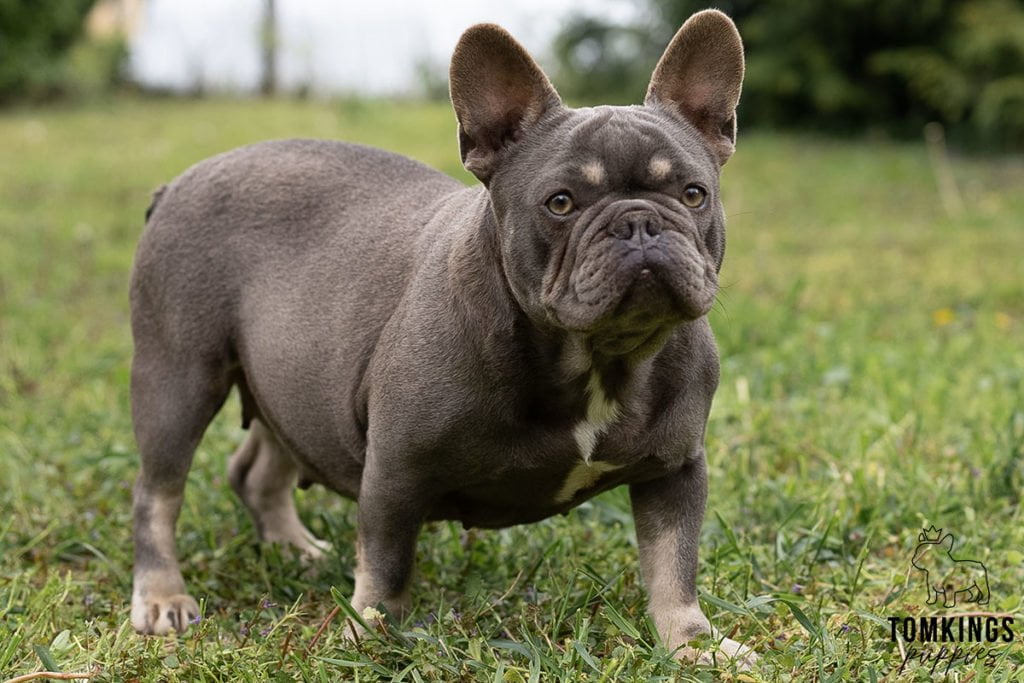

Preparing for the delivery
It’s important to have the necessary supplies ready before your Frenchie mom’s delivery. Here are some essential items to gather:
- Whelping box made of wood or plastic, with surrounding rails to prevent the mother from accidentally crushing the puppies against the walls.
- Bedding: Cut some rugs or mats to fit the bottom of the whelping box. These will be easily replaceable in case of dirt or mess. Avoid using blankets, as they can pose a risk to the puppies.
- Wipeable and waterproof underpads: These can be purchased from a baby store and placed underneath the mother and provide easy cleanup.
- A hanging heat lamp will ensure a warm and comfortable environment for the puppies.
- A smaller plastic box with high sides to transport the newborn puppies. Line it with a soft bedding for their comfort during transportation.
- Crate for the mother’s transportation to and from the veterinary clinic.
- Cleaning supplies: Stock up on washcloths, disinfectant wipes and baby wipes for cleaning and maintaining hygiene.
- Keep some fresh meat, such as lean turkey or any other lean white meat in the freezer. The mom may not eat her regular food during the first few days after delivery, so offering fresh meat can entice her to eat.
- Royal Canin Babydog Milk: Have a puppy milk replacer kit ready, including a nursing bottle in case of difficulties with breastfeeding.
- Digital thermometer to monitor the mother’s temperature during labor and postpartum.
- Scale to weigh the puppies and track their growth and development.
Signs of labor
During the final days before your Frenchie’s delivery, it’s essential to be observant and attentive to potential signs of labor:
- Temperature drop: The mom’ body temperature usually drops from around 38-39 degrees Celsius (100.4-102.2 degrees Fahrenheit) to approximately 37 degrees Celsius (98.6 degrees Fahrenheit) just before delivery.
- Decreased or absent appetite: Typically, 1-2 days before labor, the mother dog’s appetite diminishes or completely ceases.
- Nesting behavior: The mother starts looking for a suitable place to give birth, often scratching and seeking out secluded spots.
- Vomiting and diarrhea
- Milk production: The nipples may become swollen, but this might only happen within a few hours after delivery for some dogs.
- Restlessness: The mother may display signs of discomfort, such as excessive panting, restlessness, and walking back and forth.
- Amniotic fluid discharge
- Changes in abdominal shape: The appearance of the mother’s belly may change noticeably as the puppies’ position shifts.
- Behavioral changes: The mom may seem restless, excited, or even spend most of the day lying down.
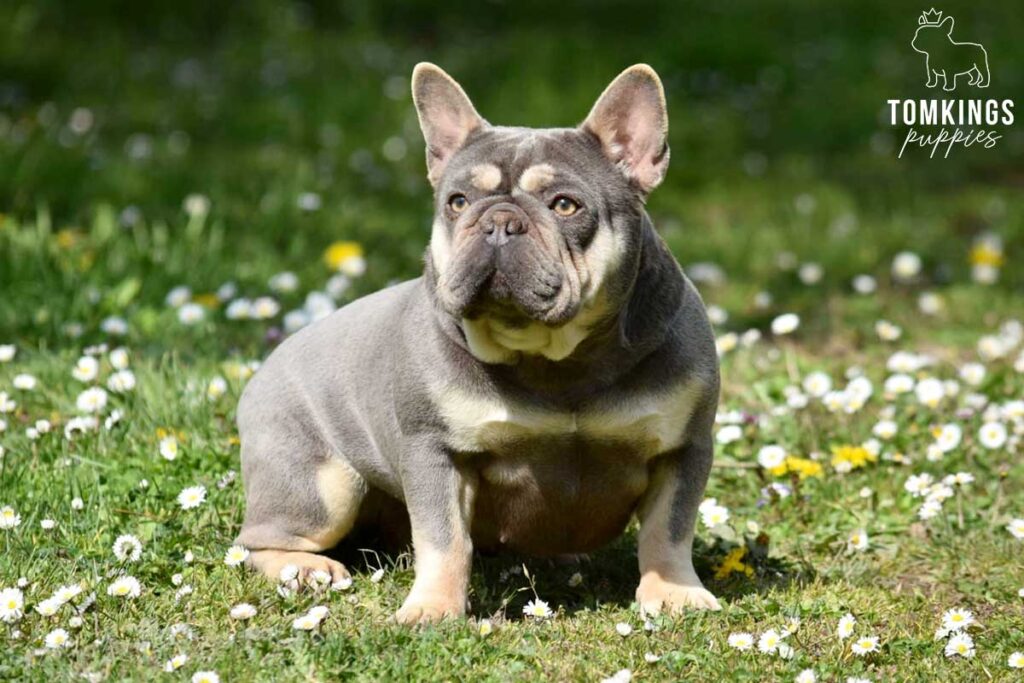

It’s crucial to understand that these symptoms do not guarantee immediate labor, and their absence does not necessarily mean the mom will not give birth within the next 24 hours.
That’s why it’s advisable to have all necessary equipment and preparations several days before the expected delivery date, to avoid any last-minute rush. If you notice these signs before the expected date, call your vet immediately!
Day of the delivery
It’s crucial not to be nervous or anxious as dogs can sense and absorb the owner’s emotions. Provide a calm and secure environment for the mother dog. Praise, comfort her and gently pet her. Talking to her in a soothing tone can help keep her relaxed.
As soon as you can see clear signs of labor, you should immediately notify the vet. Follow their guidance and instructions throughout the delivery process.
Caesarean section
During a C-section, the mother dog is placed under anesthesia. The veterinarian makes an incision on her abdomen to access the uterus, and removes the puppies one by one. Then they cut the umbilical cord and cleans the puppies. Finally, the vet stitches up the incision, and the mother dog gradually wakes up from the anesthesia.
During the caesarean section the owner is not allowed in the room. The procedure is relatively quick, usually taking about half an hour for the puppies to be delivered. The incision on the mother can be painful and sensitive, requiring careful attention. The stitches will be removed after 10 days.
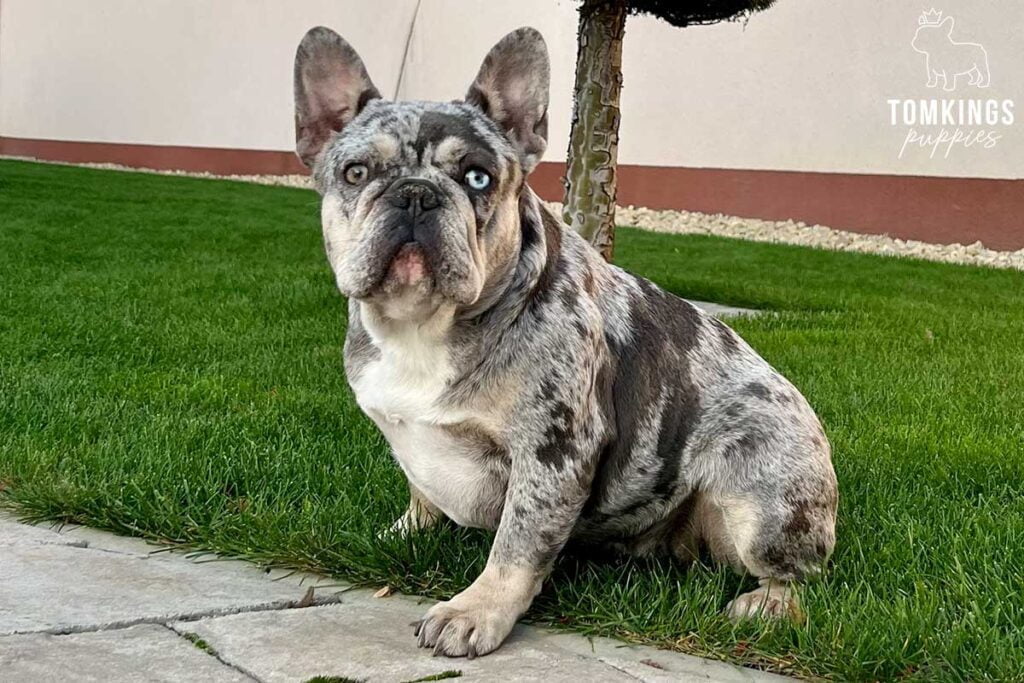

After anesthesia, the mother dog may be disoriented and trembling, unaware that her puppies have been born. It is the owner’s responsibility to introduce the puppies to her and help her understand the situation.
Since the anesthesia also affects the puppies, they are born asleep and may not cry or move much, which can be distressing even for an experienced breeder. It takes time for them to wake up, cry, and start moving. Rubbing them gently can help stimulate them, the assistants will help with that.
Once all the puppies have woken up and are healthy, they should be taken home separately from the mother. The puppies need to be transported in a box, covered and kept warm, while the mother is transported in a crate.
3. Things to Consider After Delivery
Caring for the pups at home
The Frenchie mom meets her puppies for the first time at home. So, it’s important to introduce them only when the effects of the anesthesia have completely worn off, and the mother is no longer dazed. You should be very cautious and have someone with you to carefully place the puppies next to the mom, as she may inadvertently harm them. She can sniff them, but only under close supervision.
During the first few hours, the puppies don’t need milk yet, but later they should be gently guided to the mother’s nipples to help them start nursing. It’s crucial not to leave them alone with the mother even for a second. As soon as the puppies fall asleep and stop crying, they should be removed from the mother’s side. In the initial period, the mother should be brought to the puppies every three hours until all the pups are well-fed.
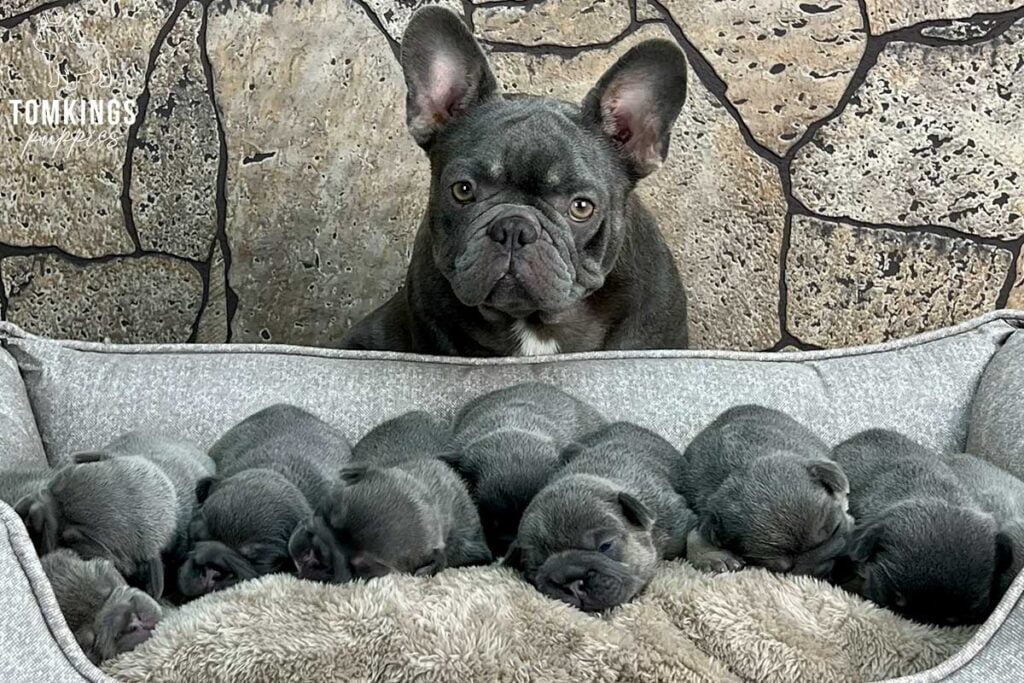

When the mother licks and cares for the puppies, make sure to praise her. If she shows no interest in them initially, that’s completely normal, her behavior will change within 1-2 days. On the other hand, if you see any aggression from the mom towards the puppies, tell her off immediately, as such behavior is unacceptable in your presence.
The mother dog’s paws and nipples should be wiped with a warm, damp cloth before allowing her to be with the puppies. Every time you handle the puppies, thorough handwashing and hand sanitization are necessary.
The temperature in the room should be around 25°C (77°F), and 27°C (81°F) directly above the puppies. If they are huddled together and sleeping close to the heat lamp, it means they are cold. If they spread apart and move away from the lamp’s light towards the edges of the box, they are warm. You should experiment with the height of the heat lamp and adjust the temperature accordingly.
Milk replacer and bottle feeding
During the first few days, the puppies rely heavily on their mother’s milk. It contains essential nutrients that are crucial for their development, survival and strengthening of their immune system. It’s important to encourage the weakest puppies to nurse too, even if it’s only a small amount.
If a puppy is too weak and cannot get enough milk, you should recognize that immediately. These pups will not thrive without supplementing their feeding with a milk replacer. Our recommendation is Royal Canin Babydog Milk, which is available in a kit with a nursing bottle, and you only need warm water to prepare it. Simply mix the powder with water, shake well, and it is ready to be fed.
The First Week
It takes a minimum of 3 days for the mother to adjust to the new situation, become comfortable with cleaning the puppies, nursing them, and start bonding with them. During the first week, she should never be left alone with the puppies, no matter how good she seems to be.


Since she can accidentally lie on top of them, she should be placed in a lying position, and the puppies should only be allowed near her nipples. You should make sure that the pups are not near the sides of the whelping box, as they can get trapped and suffocate when the mom moves.
It is important to maintain the appropriate temperature, both in the room and under the heat lamp, while monitoring the puppies. Daily ventilation is necessary, and during that time, the puppies should be covered with a blanket.
Due to the sensitivity and pain from the incision, the Frenchie mom should only be taken for a quick walk and should not be allowed to jump. She should be kept in a secure place where she cannot access the puppies. It is normal for the mother to experience bleeding as part of the postpartum process.
Paying attention to the mother’s diet is very important, as her milk production depends on her food intake. Feed her in the morning and evening. If she does not eat the regular food, which is likely to happen, you need to cook for her. Boil lean white meat in plain, unsalted water and mix it with a small amount of cooked rice. If she enjoys it, you can add cooked vegetables like carrots, sweet potatoes, or pumpkins.
Read this article to learn more about how the pups develop in their first few weeks.
Second Week
By this time, feeding the pups every 4 hours is sufficient. They become stronger during this week and start eating on their own, so there is no need to keep them on the nipple.


Depending on the mother’s attitude, you can start gradually leaving her alone with the puppies. At this stage, the mother dog becomes very attached to the puppies and enjoys being with them.
After 10 days, the stitches from the mother’s incision can be removed. There is no need to visit a vet for this. Using a sharp, sterilized nail clipper, carefully cut each stitch and then disinfect the area. It’s important to discuss this procedure with the vet in advance.
Third Week
The puppies become much stronger during this week, and feeding every 5 hours is sufficient at this stage. It is important to regularly change the carpet/doggy pad underneath them as they tend to urinate more frequently at this stage.
By now it’s generally safe for the Frenchie mom to be with the puppies at all times. Their eyes are fully open, and they start to interact with each other, which is the most adorable phase. They push themselves up with their front paws and begin to stand on their feet.
Fourth Week
During the fourth week, the puppies begin to learn how to walk but may still be a bit unsteady. They will require more space from now on to move around freely and play. If the weather is nice, you can start taking them outdoors on a blanket towards the end of the fourth week. You can also begin training them to use doggy pads in a separate area, preferably in one corner.
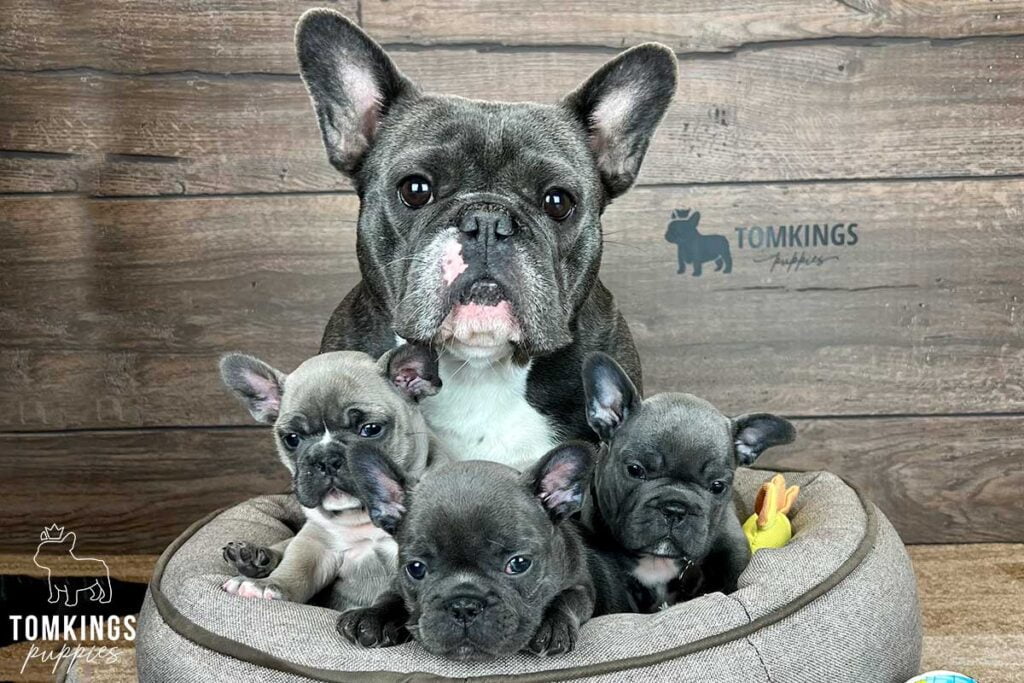

Towards the end of the week, you can start introducing weaning with warm water-soaked Royal Canin Starter food, thoroughly blended to a liquid consistency. Initially, you can apply it on their tongue and gradually assist them in standing next to the food bowl. Start with small portions and they will grow to enjoy it. You can also give them water, but only in very small amounts to prevent choking.
What treatments should the puppies get
The puppies need to be dewormed every two weeks from the age of 4 weeks old. They should be regularly checked by the vet and get all their mandatory vaccinations:
- At 6 weeks against Parvovirus
- At 8 weeks a combination vaccine for DHPPi/L against Distemper, Hepatitis, Parvovirus, Parainfluenza, and Leptospirosis.
- At 10 weeks a booster shot of the combination vaccine
- At 12 weeks against rabies
- At 14 weeks against kennel cough (optional).
Socialization
From the moment the puppies are born, it’s crucial to spend time and bond with them outside feeding time. Talk to them to help them get accustomed to human voices and human presence.


As they begin to grow, take them out regularly, hold them in your lap, show them affection, and make it natural for them to receive attention. Once they start walking, introduce them to different locations apart from their own designated area. Allow them to explore certain parts of the house, where they can encounter unfamiliar smells, sounds, and objects, of course, within safe limits.
Start teaching them to distinguish between what is allowed and what is not. Praise them when they behave well and firmly tell them off with a clear “no” command when they misbehave. Let them interact with children and elderly individuals, but ensure that everyone handles them gently and with care.


Ultimate Guide
to Raising a Frenchie
Summary
As you can see, French Bulldog breeding requires careful attention to numerous various factors. Providing a suitable environment for the puppies, taking care of the mother’s well-being, and ensuring timely vaccinations are just a few things to consider for a successful breeding process. By investing not just enough money but also time and effort, one can become a responsible French Bulldog breeder, contribute to the health and well-being of these beloved dogs and even prolong the average French Bulldog lifespan.
If you’d like to learn more about Frenchies, join our Facebook group called TomKings Frenchie Family to read our Frenchie parents’ experiences!
The article is based on the expert knowledge of the TomKings Puppies team who have been breeding French Bulldogs for 10 years on their farm. All the pictures in the post belong to them and their customers, and show puppies from their breed. Check their available French Bulldog puppies, or if you have any questions or comments let us know below the article.
FAQ
A veterinarian must screen the parent dogs before breeding, and verify through blood and genetic tests that the dogs don’t carry any genetic mutations.
A female Frenchie can start breeding in the second heat cycle, which is typically around 14-15 months of age.
Their unique physical characteristics make it difficult for Frenchies to mate naturally.
Related Blogposts:
- French Bulldog Breed Standard: 7 Traits That Make Frenchies Beautiful
- Chihuahua vs French Bulldog: Can We Help You Choose?
- Why Two French Bulldogs Are Better Than One: 7 Benefits You’ll Love
- The 5 Biggest Mistakes New Frenchie Parents Should Avoid
- 9 Dogs That Look Like French Bulldogs
- Boxer vs French Bulldog: Complete Breed Comparison Guide

